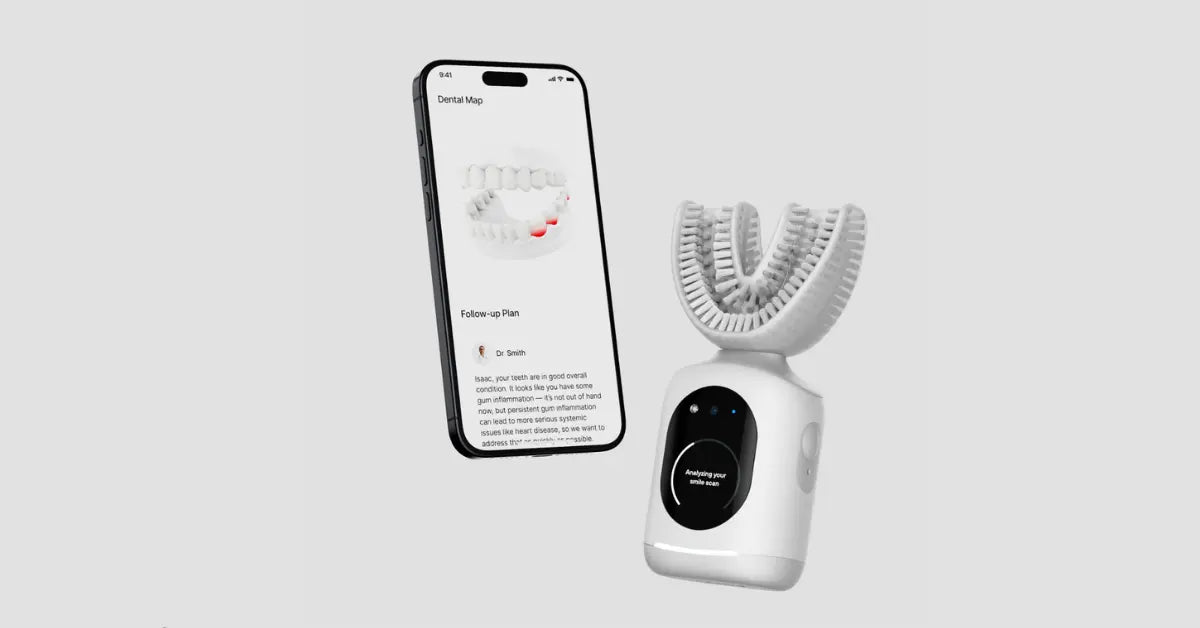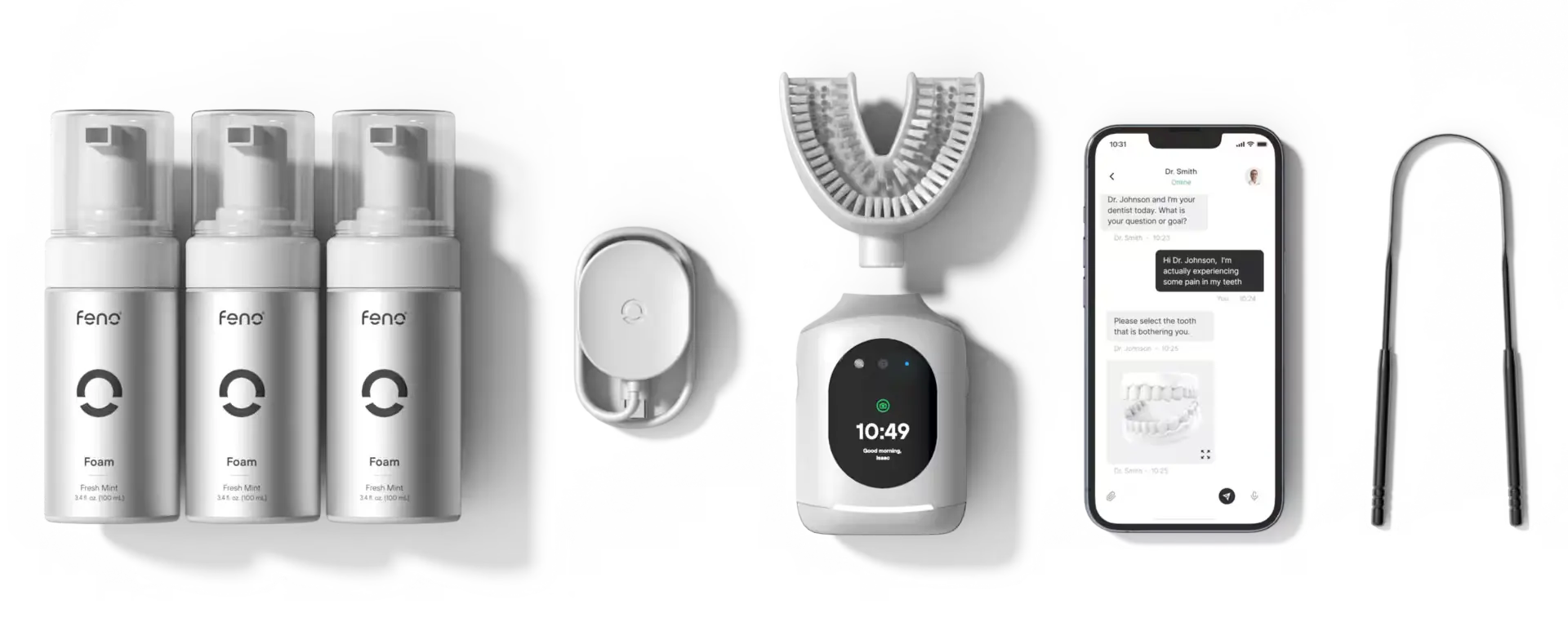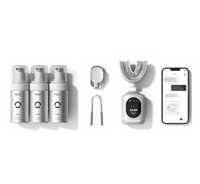
12 min read
The Role of Saliva Testing in Diagnosing Periodontal Disease
Periodontal disease, commonly known as gum disease, is a prevalent oral health issue that affects a significant portion of the global population. It begins as gingivitis, marked by red, swollen gums that bleed easily and can progress to periodontitis, where the damage extends to the bone supporting the teeth. This progression can lead to tooth loss and has been linked to systemic health problems like diabetes and heart disease. Diagnosing periodontal disease early is crucial, but traditional methods can be invasive and uncomfortable, highlighting the need for more patient-friendly diagnostic tools.
The Science Behind Saliva Testing
Role of Saliva in Oral Health Diagnosis
Often overlooked as merely a digestive aid, saliva is actually a complex fluid rich in proteins, enzymes, and antibodies. It plays a critical role in oral hygiene by neutralizing acids produced by bacteria in the mouth, thus protecting against tooth decay and gum diseases. Beyond oral health, saliva reflects systemic conditions, offering insights into the body's overall state.

Key Biomarkers in Saliva for Gum Disease Detection
These include enzymes like matrix metalloproteinases, which are involved in tissue breakdown during gum disease, and cytokines that reflect inflammation levels. By measuring these substances, saliva tests can pinpoint the onset of periodontitis at a stage when it can still be managed or reversed, marking a significant advance over older diagnostic methods that only detect later stages.
How Saliva Reflects Periodontal Inflammation
Specific degradation products in saliva can indicate the breakdown of periodontal tissues, providing a clear picture of the disease’s progression. This information is crucial for tailoring treatment plans that are both effective and minimally invasive, thereby improving patient outcomes and comfort.
Advances in Saliva Testing Techniques and Technologies
The field of saliva testing techniques has seen significant technological advancements, making it more accurate and accessible than ever before. Modern technologies now allow for the rapid analysis of saliva samples using sophisticated devices that can detect and quantify multiple biomarkers simultaneously. Such a multiplexing capability enhances the utility of saliva as a diagnostic tool, allowing for comprehensive assessments of oral health and the early detection of potential problems.
Benefits of Saliva Testing in Dental Care
Non-Invasive and Painless Diagnosis
One of the primary advantages of periodontal disease testing is its non-invasive nature. Unlike traditional methods requiring probing or tissue sampling, saliva collection is painless and stress-free. This approach significantly reduces patient anxiety and discomfort associated with dental visits, encouraging more frequent monitoring and maintenance of oral health. By simplifying the diagnostic process, saliva testing can lead to better patient compliance and more consistent care outcomes.
Early Detection of Periodontal Disease Risk
Saliva testing excels in identifying periodontal disease risk at an early stage, often before symptoms become evident. This proactive detection is crucial for preventing the progression of gum disease to more severe stages, such as periodontitis, which can lead to tooth loss and other complications. Early intervention, facilitated by saliva diagnostics, allows for timely treatments that can halt disease progression and preserve oral health.
Monitoring Treatment Effectiveness
Another significant benefit of saliva testing is its ability to monitor the effectiveness of treatments and the progression of periodontal disease over time. Regular saliva assessments can track changes in biomarker levels, offering real-time feedback on how well treatment strategies work. Ongoing oral health monitoring helps refine treatment plans, ensuring that interventions remain as effective as possible and are adjusted according to the dynamics of the disease's response.
Tools for Periodontal Diagnosis
Probing and Radiography
Probing and radiography have long been staples in diagnosing periodontal disease, involving physical examination and X-rays to assess bone loss around teeth. However, these methods can be uncomfortable and invasive, discouraging patients from regular check-ups. In contrast, saliva testing for periodontal disease offers a less invasive alternative that can frequently and easily monitor oral health without the discomfort associated with traditional methods.
Efficiency and Accuracy of Saliva Testing
These tests can quickly process and deliver results, allowing for faster diagnosis and earlier treatment initiation. Furthermore, the accuracy of saliva testing is continually improving with advances in biotechnology, enhancing its reliability in detecting various biomarkers associated with periodontal disease. Precision helps identify the disease in its nascent stages, potentially saving patients from more severe health issues.

Saliva Testing and Personalized Periodontal Care
Identifying Genetic and Lifestyle Risk Factors
By analyzing specific markers in saliva, dental professionals can detect susceptibilities to gum disease linked to genetics, such as increased inflammatory response or weak immune defense against oral pathogens. This testing also captures the influence of lifestyle choices, like smoking or poor dietary habits, which exacerbate periodontal conditions. Understanding these factors enables dentists to advise patients more effectively on preventive measures and tailor treatments that address both genetic and environmental aspects of gum health.
Tailoring Treatment Plans to Individual Needs
Based on the unique biomarker profile of each patient’s saliva, treatments can be specifically designed to combat the individual characteristics of their periodontal disease. A personalized approach not only improves the effectiveness of the treatment but also minimizes unnecessary interventions, thereby optimizing patient outcomes and resource use within dental practices.
Preventive Strategies Based on Saliva Test Results
The information provided by saliva tests is instrumental in developing preventive strategies that curb the onset and progression of gum disease before it requires more aggressive treatments. Dentists can use these test results to recommend changes in oral hygiene practices, dietary adjustments, and stress management techniques that reduce the risk factors associated with periodontal disease. Proactive use of saliva diagnostics supports a more preventive, rather than reactive, approach to dental care, enhancing long-term oral health and reducing the need for surgical interventions.
Integrating Saliva Testing with Modern Oral Health Techniques
The Role of Smart Toothbrushes
Such devices leverage advanced features to ensure effective plaque removal, improved brushing techniques, and better gum care. By incorporating cutting-edge technology, they address common oral health issues like gum recession, gingivitis, and plaque accumulation. Below are the key features that make smart toothbrushes a game-changer for maintaining healthier gums:
- Pressure Sensors: Overbrushing or using too much pressure can lead to gum recession, irritation, and enamel wear. Smart toothbrushes with built-in pressure sensors alert users through vibrations, lights, or app notifications when brushing too hard. Sensors are invaluable for individuals with sensitive gums in fostering healthier brushing habits. By protecting delicate gum tissue, pressure sensors support long-term oral health and reduce the risk of gum-related issues.
- Sonic or Oscillating Technology: Sonic and oscillating toothbrush technologies are designed to provide superior plaque removal, especially along the gum line, where buildup often leads to gingivitis. These toothbrushes use high-frequency vibrations or oscillating movements to dislodge plaque and food particles from hard-to-reach areas. The gentle yet powerful cleaning action targets areas that traditional brushing might miss, promoting thorough oral hygiene. This technology ensures effective cleaning while minimizing irritation for users prone to gum inflammation. Also, using sonic or oscillating brushes helps maintain a healthy balance between cleaning power and gum care, making them a reliable tool for preventing gum disease.
- Companion Apps: Many smart toothbrushes come with companion apps that enhance oral care routines by tracking brushing habits and providing personalized insights. These apps monitor metrics like brushing duration, coverage, and frequency, helping users identify areas that need extra attention. For individuals with gum issues, the data-driven insights can highlight regions where plaque tends to accumulate, or brushing is insufficient. Some apps even gamify the process, turning brushing into a fun, goal-oriented activity encouraging adherence to dentist-recommended practices.
- Gum Care Modes: Gum care modes are specifically designed to address individuals with sensitive or inflamed gums' unique needs. These modes use softer bristles, gentler vibrations, and slower speeds to clean the teeth while massaging the gums. This dual action stimulates blood flow, reduces inflammation, and promotes gum healing. Regular use of gum care modes enhances oral health and provides a soothing experience for those dealing with gum sensitivity. Whether used as part of a daily routine or as needed during flare-ups, these modes ensure that gum tissue remains healthy and resilient.
By addressing common challenges like excessive pressure, plaque buildup, and inconsistent brushing, they empower users to protect and nurture their gums. These innovations represent a significant step forward in preventive dental care, promoting healthier smiles for years to come.
Intelligent Toothbrushes
Intelligent toothbrushes offer a leap forward in personal dental care by providing immediate feedback during the brushing process. This feedback helps users adjust their techniques in real time, ensuring all areas of the mouth are adequately cleaned and that the brushing pressure is optimal to avoid damaging sensitive gum tissue. The technology behind these brushes can also track long-term trends in oral hygiene, allowing users to see improvements over time or identify areas needing more attention.
Mouth-shaped Toothbrushes
Unlike traditional toothbrushes, which require manual maneuvering to reach all corners of the mouth, these innovative devices provide comprehensive coverage in a single motion. Their design often incorporates multiple rows of bristles strategically placed to clean the surfaces of teeth, gums, and even the hard-to-reach areas like the back molars simultaneously. The focus is on cleaning efficiency and improving the overall experience, as users can achieve more thorough cleaning in less time. This aspect is particularly beneficial for individuals who struggle with traditional brushing techniques, such as children or individuals with limited dexterity, ensuring a consistent and effective oral hygiene routine. One of the most notable benefits of mouth-shaped toothbrushes is their ability to target areas commonly missed by traditional brushing methods, such as the spaces between teeth and along the gum line. Some variants even use antimicrobial bristles, which help in reducing bacteria levels in the mouth, making them a valuable tool in combating oral health issues at their root.

Practical Considerations for Saliva Testing in Dental Care
Accessibility and Affordability
As technological advancements make these tools more sophisticated, they must remain cost-effective to ensure all dental practices can integrate them into their services, regardless of size or location. The physical availability of these tools, including the ease of obtaining and maintaining the necessary equipment and reagents, plays a critical role in their practicality for routine use in dental clinics.
Training and Implementation for Dental Practices
Integrating saliva testing into dental practices is an exciting opportunity to enhance diagnostic precision and improve patient care. However, successful implementation requires deliberate planning and execution. Here are the key steps to make this transition seamless and effective:
- Staff Training: Dental teams must understand how to use the testing equipment and interpret results with accuracy. This requires initial hands-on training sessions and continued professional development to stay updated on advancements in testing techniques. Emphasizing real-world applications and simulations during training helps build confidence in the new process. Moreover, clear documentation and easy access to reference materials allow team members to revisit procedures as needed.
- Workflow Integration: Incorporating saliva testing into existing workflows requires careful analysis and planning. Defining clear procedures for administering tests and handling results is essential. Practices should outline specific scenarios where saliva testing is most beneficial and determine the optimal timing for administration during appointments. Scheduling adjustments may also be necessary to accommodate testing and subsequent consultations. Collaboration among team members is critical to streamline this integration, ensuring that saliva testing complements rather than disrupts regular operations.
- Tech Support: Partnerships with equipment providers are crucial for smooth implementation. Providers can assist with installing and maintaining saliva testing tools, troubleshooting issues, and offering upgrades as technology evolves. Having reliable technical support ensures minimal disruptions, especially in the early stages of integration. Practices should also explore service agreements or warranties to cover unexpected equipment issues. Regular check-ins with providers allow practices to identify and address potential challenges proactively. Collaboration reduces downtime, builds confidence in the technology, and enables a more effective adoption process.
- Patient Education: Informing patients about the purpose and benefits of saliva testing fosters trust and eases any concerns they may have. Clear explanations of the procedure, including its non-invasive nature and potential diagnostic insights, encourage acceptance. Practices can use brochures, videos, or one-on-one consultations to educate patients effectively. Addressing common questions and managing expectations about results further enhances the experience. Educated patients are more likely to engage with and appreciate the value of saliva testing in their oral health journey.
Addressing these critical areas can help dental practices integrate saliva testing smoothly and effectively. This proactive approach ensures that both staff and patients are fully prepared for the transition, resulting in improved diagnostic capabilities and overall patient satisfaction.
The potential of saliva testing extends beyond the dental clinic into broader systemic health applications. As research continues to uncover the links between oral health and systemic diseases, saliva diagnostics could become a key component in holistic health assessments, predicting and preventing a variety of conditions. The ongoing development of saliva testing promises to enhance dental care and play a significant role in the future of integrated health practices.
Share



